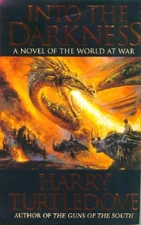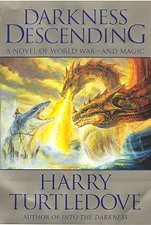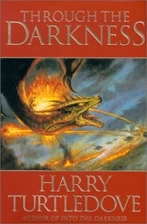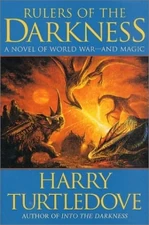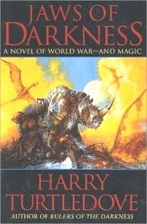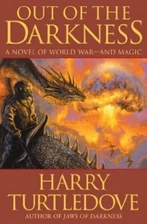Valmiera was a large kingdom on the southeastern coast of Derlavai. Temperate in climate, it lay east of Algarve and faced Lagoas and Kuusamo across the Strait of Valmiera. Its king at the time of the Derlavaian War was Gainibu, who ruled in the capital of Priekule.
History
Ancient Valmiera was part of the Kaunian Empire. In later centuries Valmieran sailors explored the resource-rich islands around the equator and fought naval wars with Sibiu and Lagoas over them. Valmiera also freely meddled in the affairs of the various Algarvian kingdoms, backing various puppet rulers who served its interests.
Valmiera was one of many kingdoms that fought Algarve in the Six Years' War. The war proved costly for Valmiera, and late in the conflict Lagoan soldiers assisted the Valmierans in halting an Algarvian advance in the woods before Priekule. Nonetheless, Valmiera emerged as one of the war's victors and a chief beneficiary of the Treaty of Tortush, which saw control of the Marquisate of Rivaroli pass from Algarve to Valmiera.
The Derlavaian War
A generation after the Six Years' War, Valmiera declared war on Algarve along with the Kingdoms of Sibiu, Forthweg, and Jelgava following the Algarvian annexation of the Duchy of Bari. The Valmieran generals and nobility were optimistic about their chances for victory, harkening back to their earlier triumph in the Six Years' War.
This optimism proved to be sorely misplaced. The Valmieran advance into southeastern Algarve stalled when it ran into Algarvian fortifications; Valmieran attacks resulted in heavy losses and failed to breach the Algarvian line. In addition, the Valmieran army was handicapped by the insipid leadership of its exclusively-noble officer corps and outdated tactics. With their advance stalled, Valmiera's generals seemed content to wait on further events.
With Forthweg and Sibiu crushed, Algarve turned its attention to Valmiera. In the spring of the war's second year a massive strike was launched through the heavily forested hills north of the Valmieran army's main force, and succeeded in cutting off the Valmierans from their homeland. Priekule fell in short order, King Gainibu was taken by surprise in his palace, and Valmiera surrendered.
Occupation
Valmieran reactions to their defeat varied. With Jelgava falling soon after and Lagoas impotent on the other side of the Valmiera Strait, most of the nobles resigned themselves to Algarve's victory. King Gainibu became a drunkard and a puppet for the Algarvians, who enjoyed making him pay for his father's earlier humiliation of their country, while Valmiera's nobles either actively collaborated with Algarve or simply acquiesced to its rule.
The common population, on the other hand, became the source of Valmiera's resistance movement, along with a few nobles. More heavily oppressed by the Algarvians, they reacted with acts of defiance both petty and lethal. Active sabotage of ley-lines and the killing of Algarvian soldiers resulted in the taking and execution of Valmieran hostages, while other civilians disappeared into 'night and fog'. These acts, along with the slaughter of Forthwegian Kaunians, only inflamed the populace further. Lagoas and Kuusamo aided the resistance as best they could even as their dragons raided Valmiera by night.
Throughout the middle of the war the Valmieran resistance grew increasingly more powerful as Algarve was forced to transfer more and more of its garrison west to the losing war in Unkerlant. At the same time, some Valmieran nobles, seeing Unkerlant and its tyrannical king Swemmel as a greater threat to civilization, sponsored the creation of the Phalanx of Valmiera. Though few Valmierans volunteered for this unit, its members served Algarve well throughout the latter days of the war until the Phalanx was finally destroyed in the final battle for Trapani.
Liberation and Retribution
In the final year of the war, as Algarve was driven back by Unkerlant and lost Jelgava to the islanders, its garrison finally abandoned Valmiera. Lagoan and Kuusaman forces, along with Valmieran exiles, swiftly moved in. Algarve responded by launching an unsuccessful counterattack during the winter that was pummeled by the islanders' dragon swarms, after which small Valmieran forces advanced with the islanders into Algarve itself.
The aftermath of the war was a time of rejoicing and retribution. Valmierans wasted no time in punishing collaborators; some were executed, some were imprisoned and others - particularly women who had slept with Algarvian soldiers - subjected to public ridicule and shame. Some of the worst Algarvian offenders were also remanded to Valmiera after the war; these men were tried and usually executed.
While Gainibu retained his throne and regained some of his authority over the country, postwar Valmiera was firmly aligned with the Lagoan/Kuusaman bloc against Unkerlant.
Society and People
Being of Kaunian stock Valmierans were slim, blonde and blue-eyed and typically wore trousers and tunics.
While not as oppressive as their Jelgavan counterparts, Valmieran nobles such as Krasta were still quite authoritarian, even brutal at times, towards the commoners. The army's officer corps was comprised entirely of nobles; one commoner, Merkela, quipped after the war that perhaps the reason Unkerlant had won while Valmiera lost was because most of the Unkerlanter nobles had already been killed by Swemmel.
Literary Comment
"Valmiera" is a city in Latvia. The names of people and places in the Kingdom of Valmiera are also Latvian.
Valmiera is an analog of France during World War II, with some elements of pre-Revolutionary France's aristocracy woven in. The collaborators - nobles and policemen - are reminiscent of the Vichy regime.
| |||||||||||||||||||
